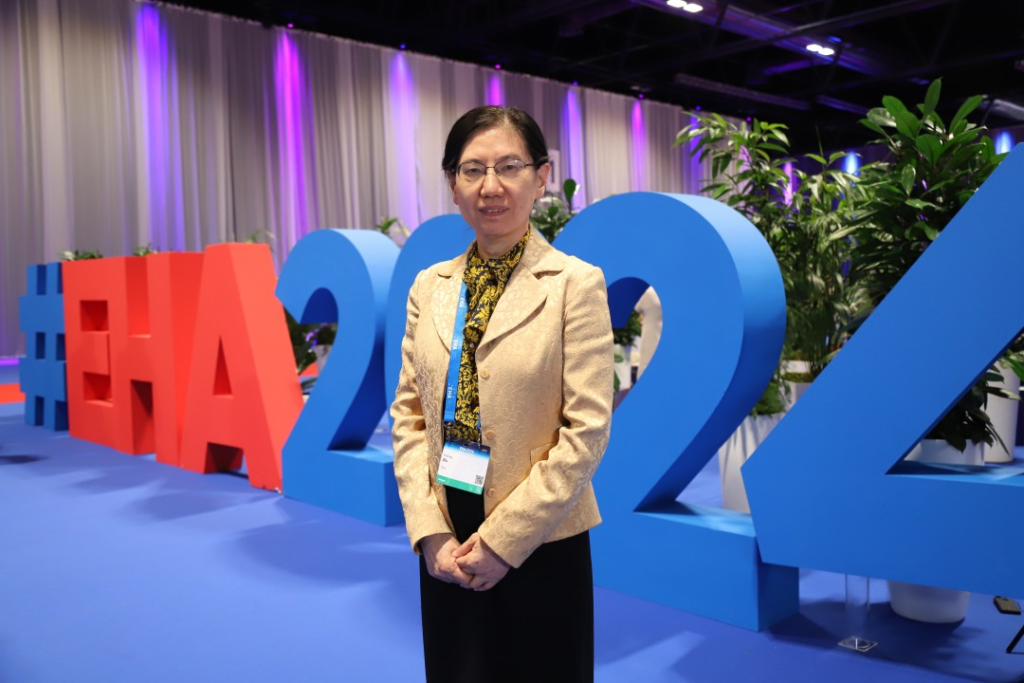
The 29th Annual Meeting of the European Hematology Association (EHA) was held from June 13-16, 2024, in Madrid, Spain. As the largest international event in the field of hematology in Europe, this conference attracts numerous renowned experts and scholars from around the world to share and discuss innovative concepts, the latest scientific research, and clinical study results in hematology. To gain a deeper understanding of the latest research in Chronic Myeloid Leukemia (CML), "Oncology Frontier - Hematology Frontier" has invited Professor Huanling Zhu from West China Hospital of Sichuan University, to provide an in-depth interpretation.Research Background
Tyrosine kinase inhibitors (TKIs) have enabled most CML patients to remain in the chronic phase (CP) long-term. However, a small proportion (1.5% annually) progress to myeloid blast crisis (MBC) or present with blast crisis at initial diagnosis. Patients in blast crisis usually require intensive chemotherapy combined with second- or third-generation TKIs, followed by allogeneic hematopoietic stem cell transplantation (allo-HSCT), with an estimated overall survival (OS) rate of 40%. The PONAZA study investigates the combination of ponatinib and azacitidine (PON+AZA) in treating CML-MBC.
Research Objective
The study aims to evaluate the efficacy and safety of PON+AZA in treating CML-MBC patients.
Research Methods
According to the revised 2022 WHO classification, MBC is defined as ≥20% blasts in bone marrow or blood, or extramedullary blast proliferation. Patients aged ≥18 years with CML-BC, without uncontrolled hypertension, high-risk vascular occlusive disease, or stage II-IV heart failure, were enrolled. The primary endpoint was the 2-year OS. The PONAZA SEQ ancillary study also observed mutations beyond BCR::ABL1. Induction therapy comprised three cycles (28 days each) of ponatinib 45 mg/day and azacitidine 75 mg/m²/day subcutaneously for seven days. Ponatinib was reduced to 30 mg/day upon achieving hematologic remission and further to 15 mg/day upon achieving major molecular response (MMR). Azacitidine was continued for up to 24 months, while ponatinib was used until disease progression. Eligible patients were recommended for allo-HSCT.
Research Results
From June 2019 to August 2023, 19 patients were enrolled with a median age of 63 years (range: 19-83 years). Ten patients were diagnosed with CML-BC initially, and nine progressed during TKI treatment, with a median TKI treatment duration of 19.3 months. Six patients had 20%-30% blasts, and 13 had >30% blasts. Four patients had major cytogenetic abnormalities (ACAs), including monosomy 7 in two patients, one with subdiploidy, and four with minor ACAs; eight patients had no ACA. Among 13 patients with detected ABL1 mutations, one had T315I and one had G250E mutations. Using next-generation sequencing (NGS), 10 out of 13 patients (77%) had mutations beyond the ABL1 kinase domain, including RUNX1 (n=2), ASXL1 (n=5), TET2 (n=2), TP53 (n=2), DNMT3A (n=1), and PHF6 (n=1). One 49-year-old female patient had a germline RUNX1 mutation with a concurrent DDX54 mutation.
Grade 3/4 serious adverse events (SAEs) included: four cardiovascular events (two cases of hypertension, one atrial fibrillation, and one QTc prolongation), four febrile neutropenia cases, one pleural effusion, one pancreatitis, one fatal sepsis, and one tumor lysis syndrome. After induction therapy, 14 patients (73.6%) achieved complete remission (CR), with a median BCR::ABL1 International Scale (IS) value of 1.14% (range: 0%-13%). Seven patients underwent allo-SCT (median transplant time: 6.3 months). With a median follow-up of 31 months, the median OS was not reached. The 2-year OS was 64.8% (95% CI: 37.5-85.5). The study showed a better survival trend in patients with <30% blasts and no major ACA.
Research Conclusion
The combination of azacitidine and ponatinib is an effective treatment for CML-BC across all ages, achieving a 2-year OS of 64.8%. The adverse events were moderate, allowing outpatient treatment. Half of the responders successfully transitioned to transplantation. NGS analysis indicated that most MBC cases involved mutations beyond the BCR::ABL1 kinase domain.
Expert Commentary
Professor Huanling Zhu: Traditional CML treatment typically involves intensive chemotherapy, followed by allo-HSCT after transitioning to the chronic phase. Despite the TKI era, 1.5% of patients annually face blast crisis, which requires our attention. The PONAZA trial explores the potential of combining ponatinib and azacitidine for CML-MBC patients. This study not only innovates in treatment strategy but also provides profound molecular insights.
NGS analysis revealed that 77% of patients had mutations beyond the ABL1 gene, including RUNX1, ASXL1, TET2, TP53, DNMT3A, and PHF6, all associated with poor prognosis. The efficacy results showed that 14 patients achieved CR, with a CR rate of 73.6%, higher than some current chemotherapy regimens. These CR patients had a median BCR::ABL1 IS value of 1.14%, indicating good treatment outcomes. Notably, seven patients successfully underwent allo-HSCT, with a median transplant time of about six months post-CR. With a median follow-up of 31 months, the median OS was not reached, and the 2-year OS rate was 64.8%, a very positive result for this patient group, especially for those with <30% blasts and no major cytogenetic abnormalities (ACAs).
In terms of safety, the study recorded treatment-related adverse events, including cardiovascular events (hypertension, atrial fibrillation, QTc prolongation) and febrile neutropenia, providing important information on the safety of the combination therapy.
The results of the PONAZA trial not only confirm the potential of ponatinib combined with azacitidine as an effective treatment for CML-MBC but also provide valuable references for future clinical practice. Given the availability of these two drugs and the convenience of outpatient treatment, this combination therapy is undoubtedly an attractive option. With more similar studies and clinical applications, we hope to offer more treatment choices and better quality of life for patients.


